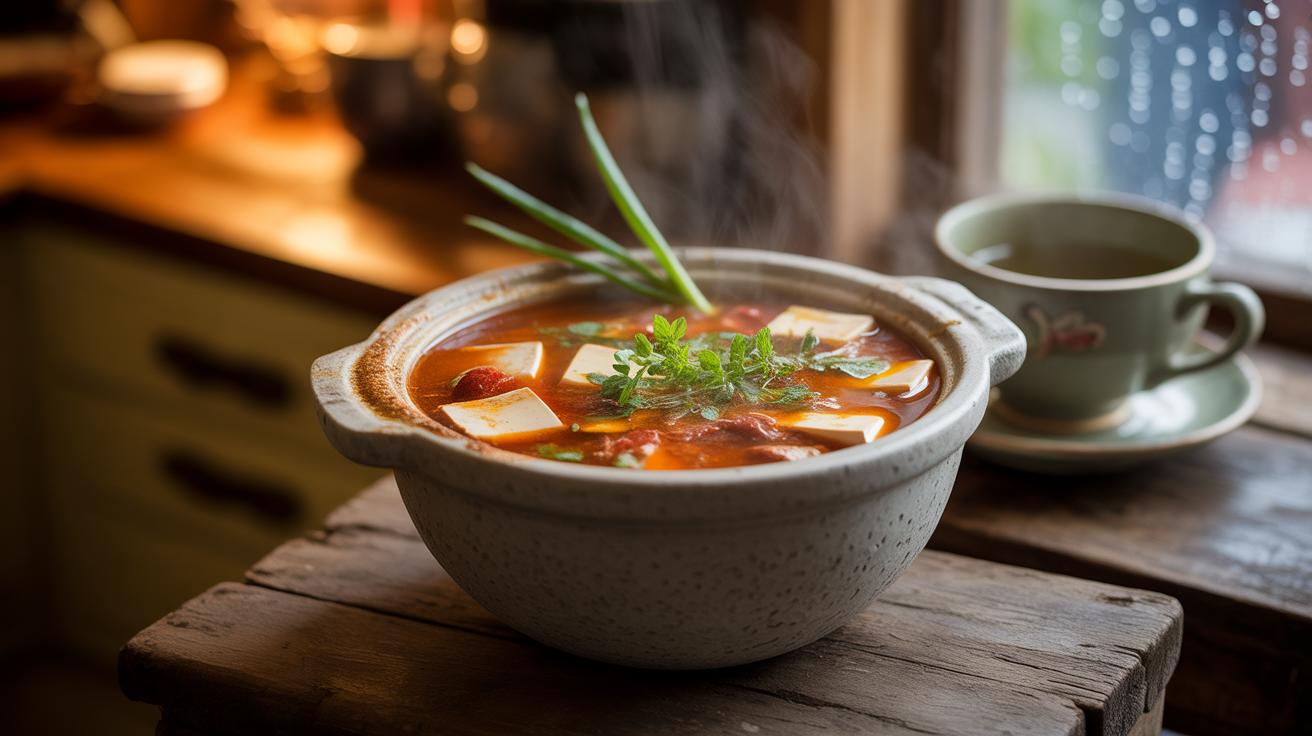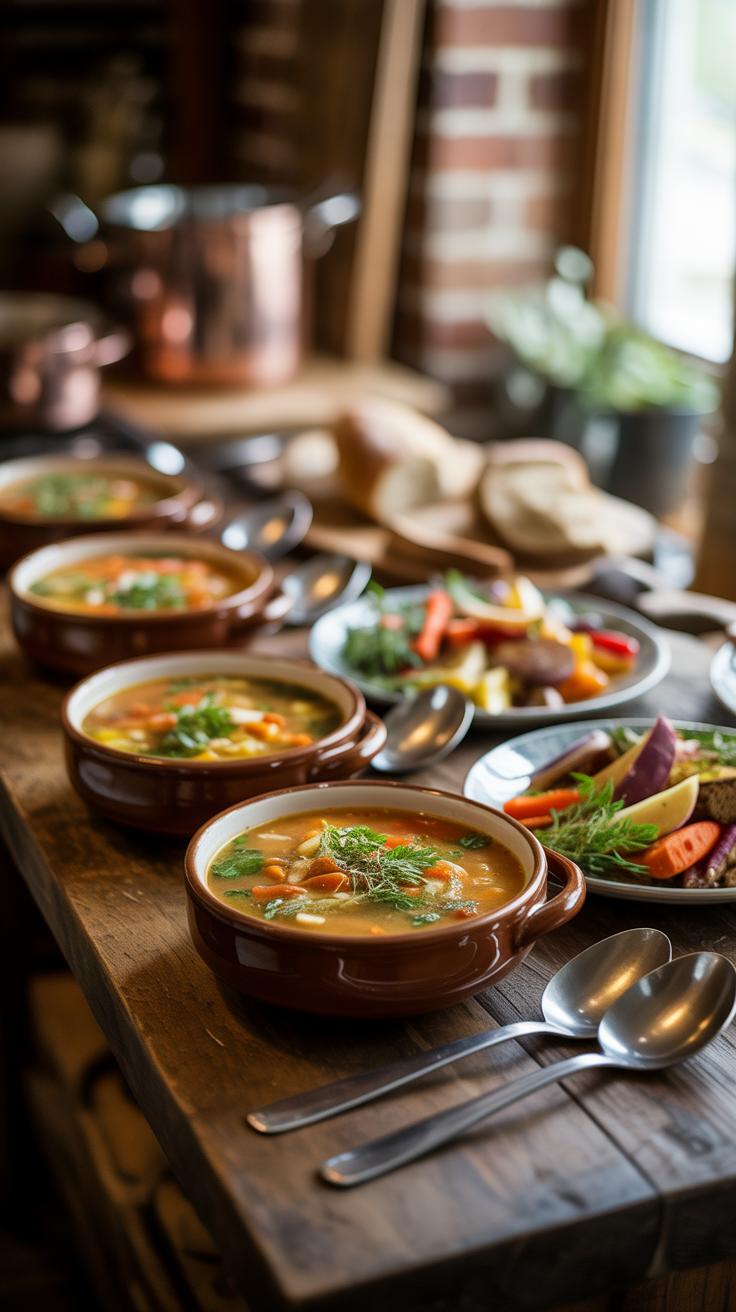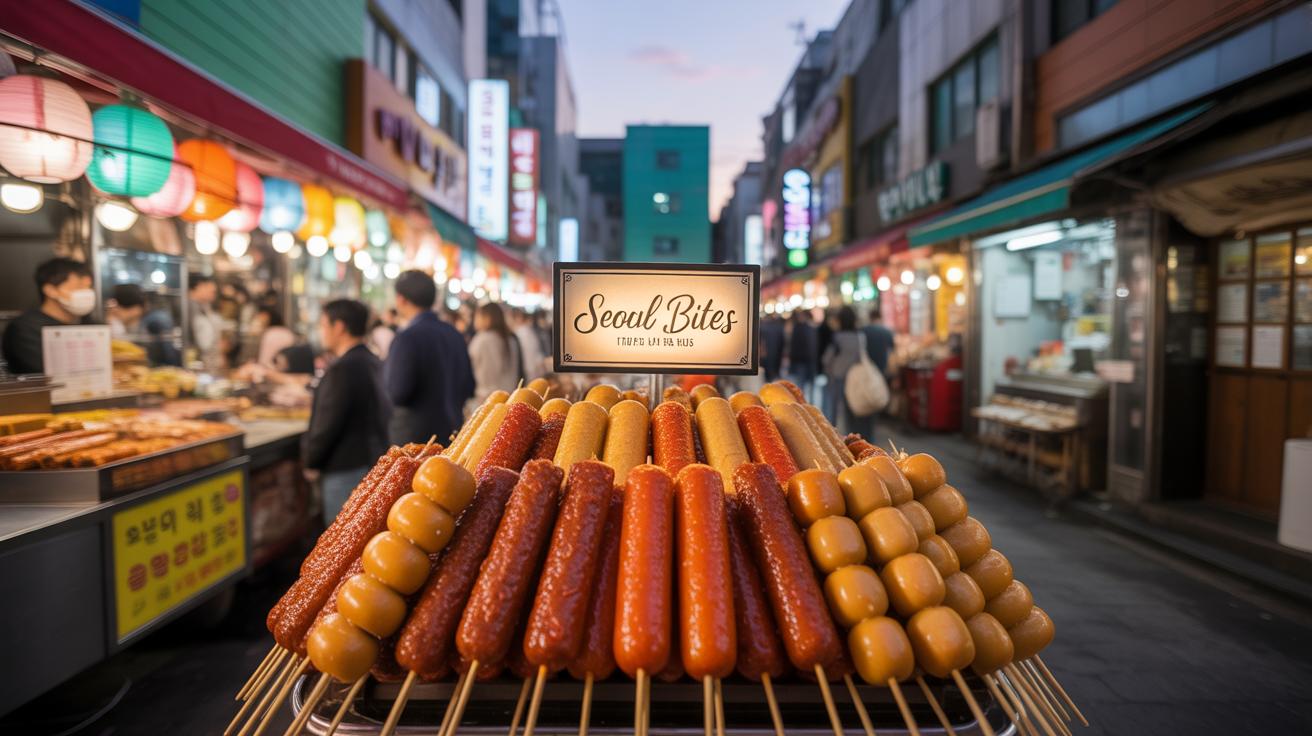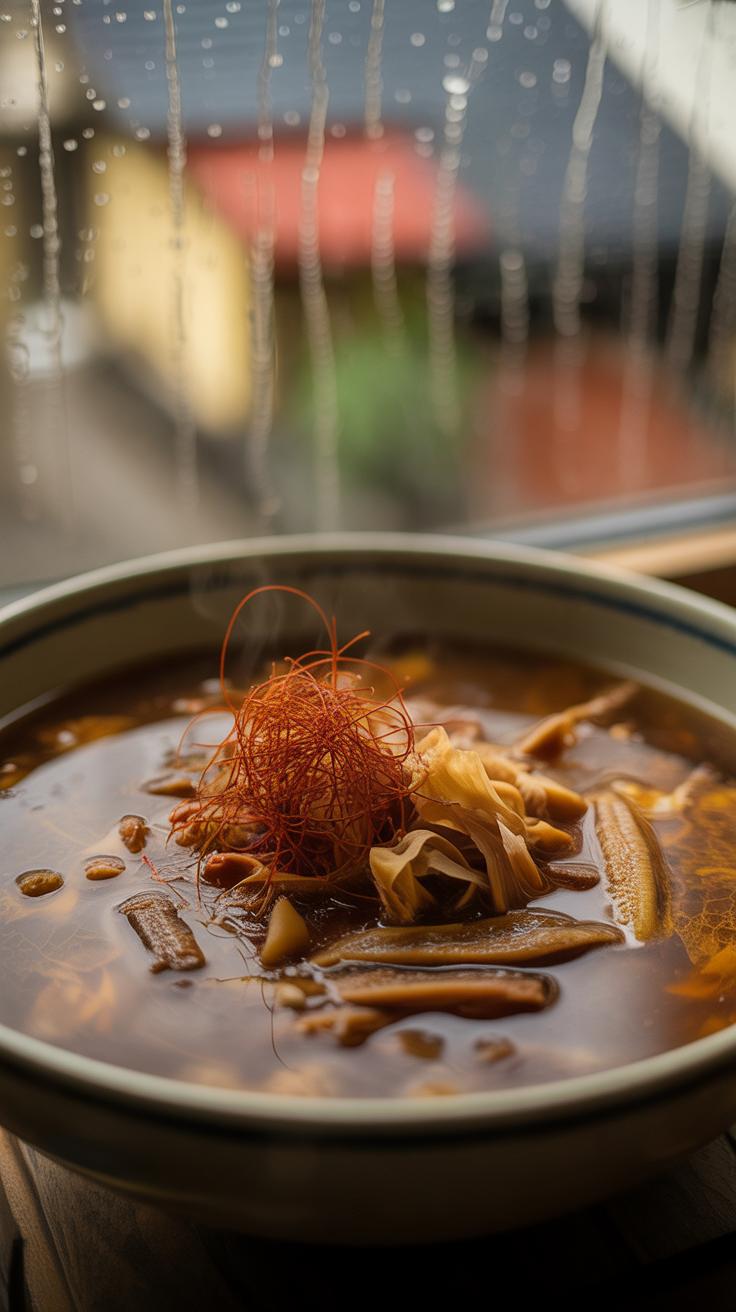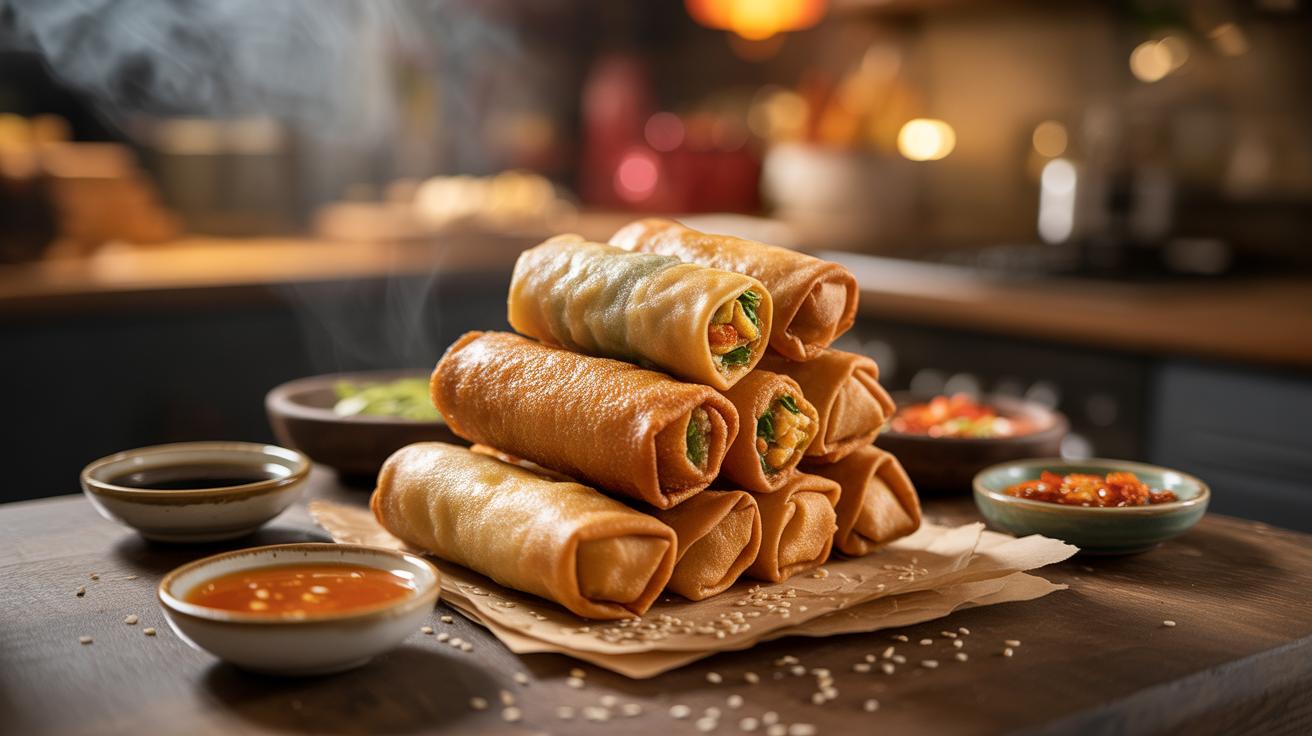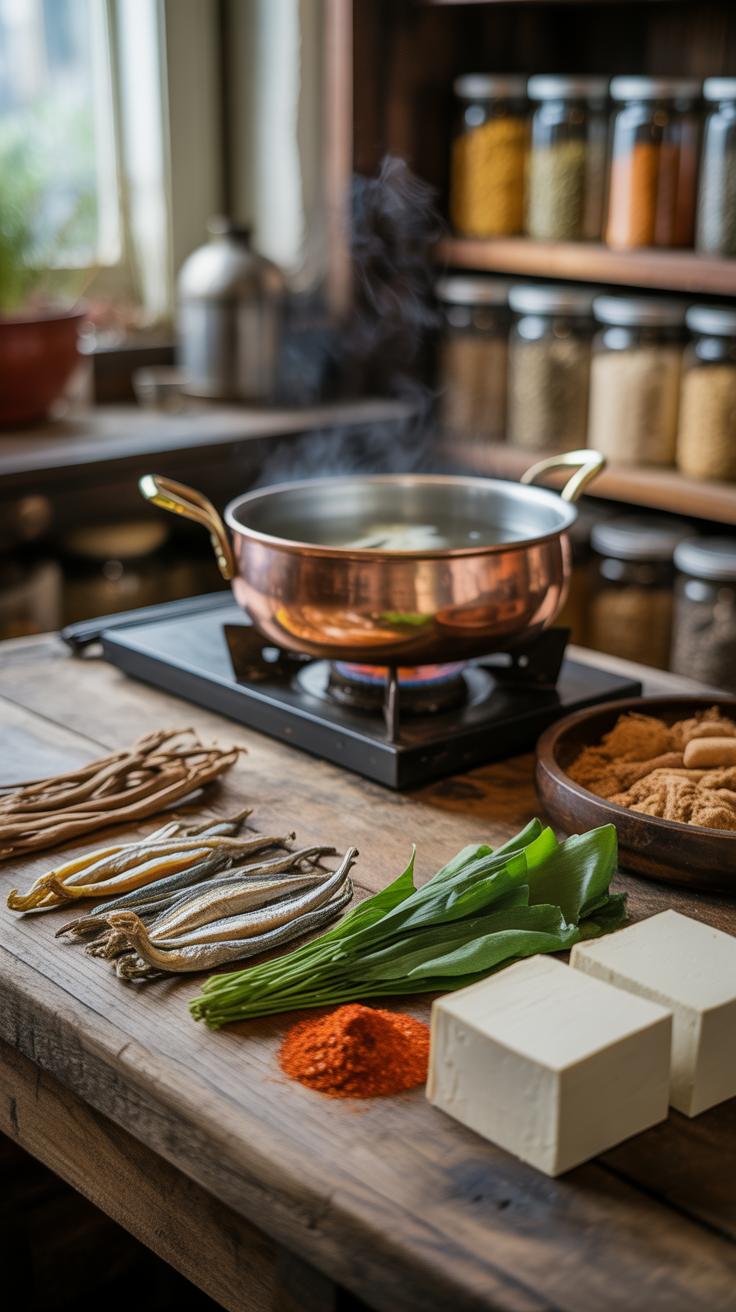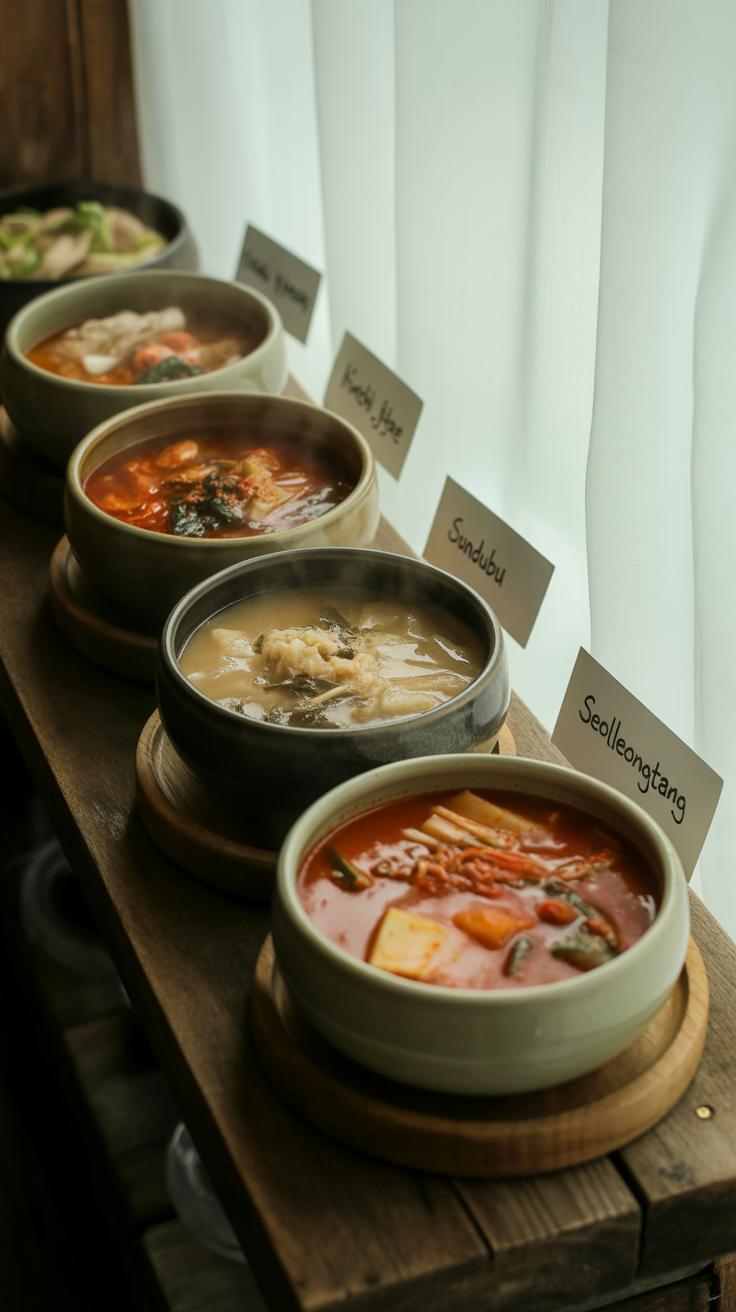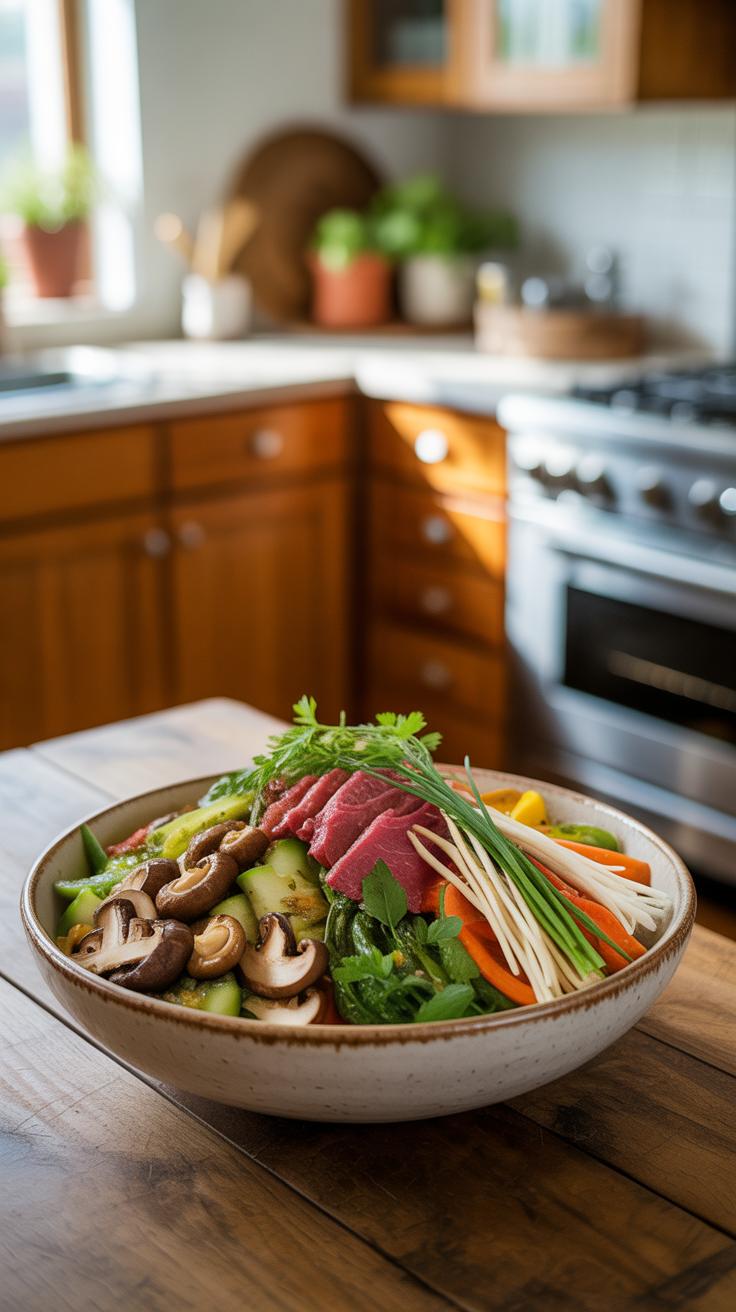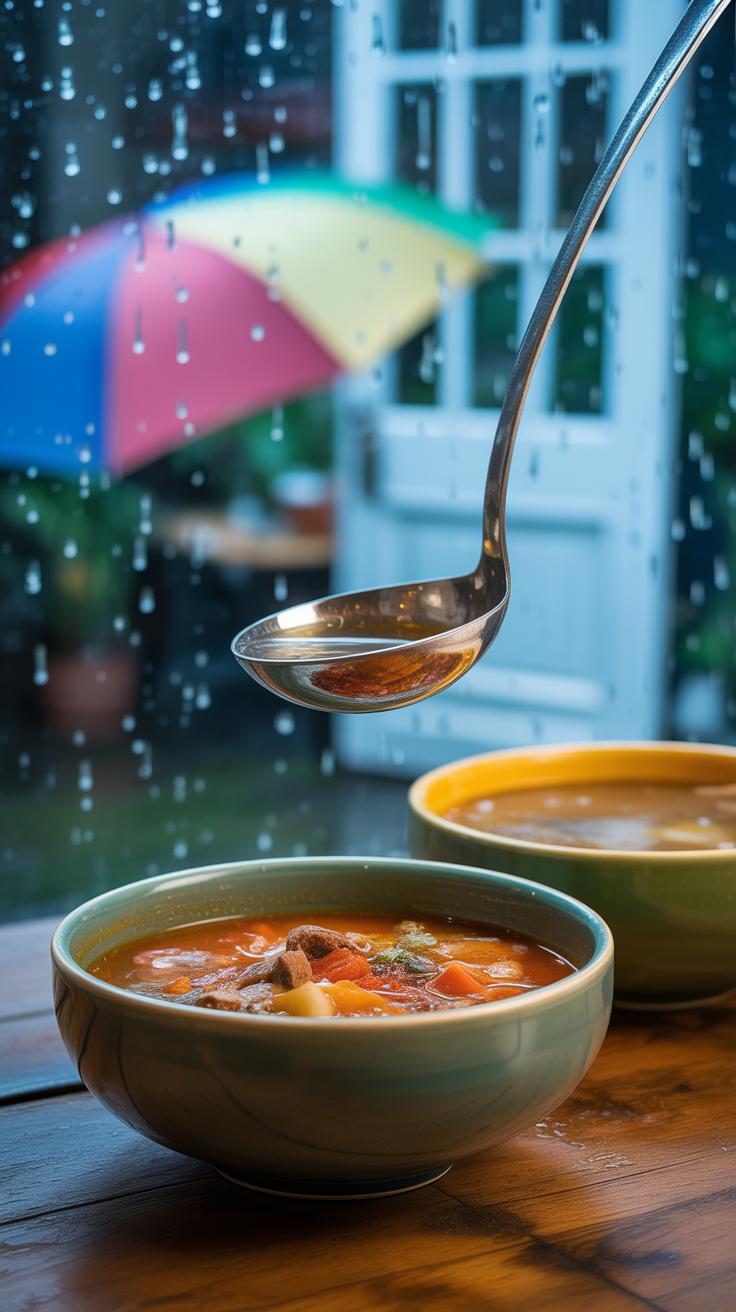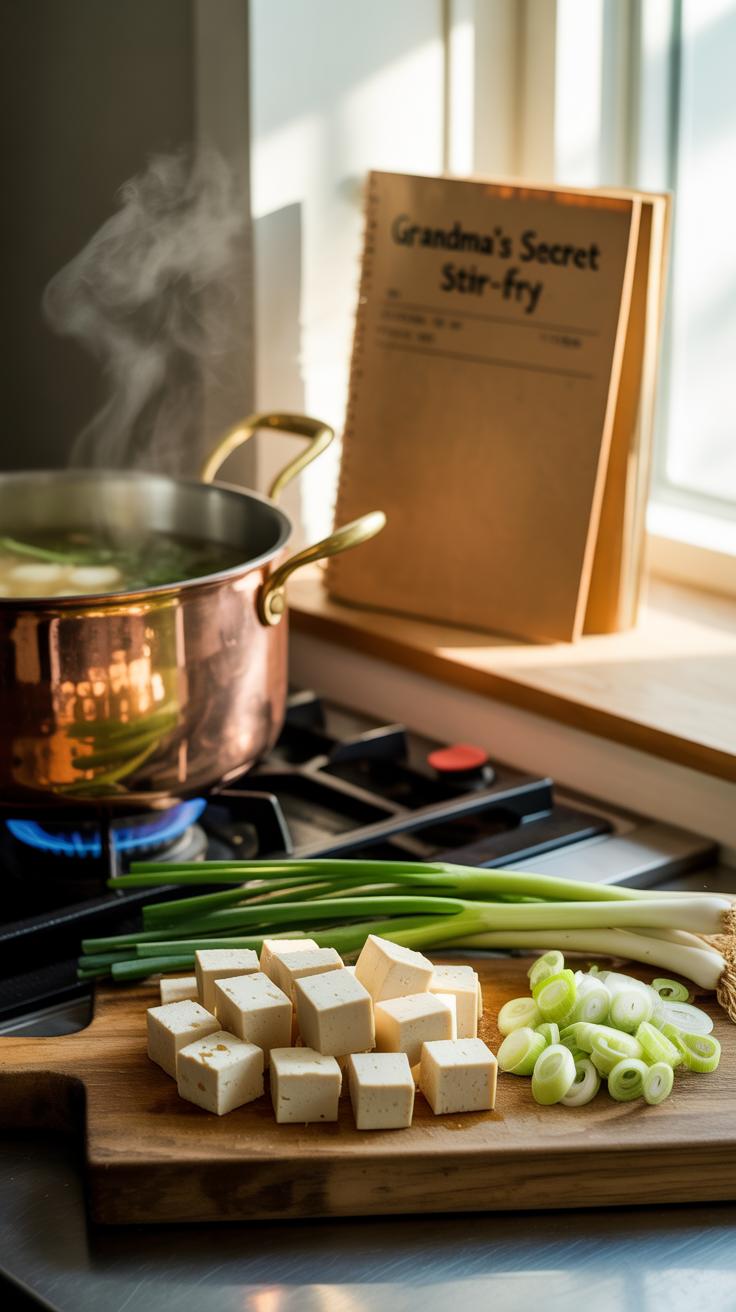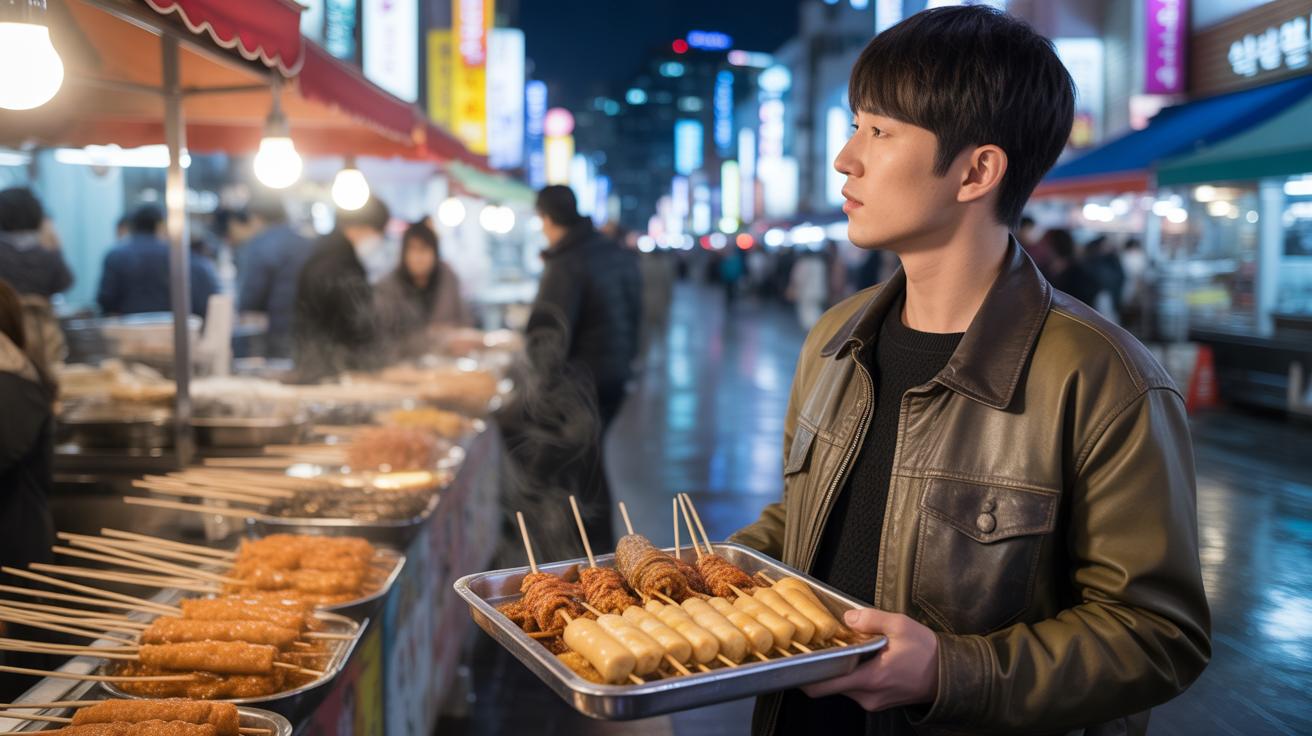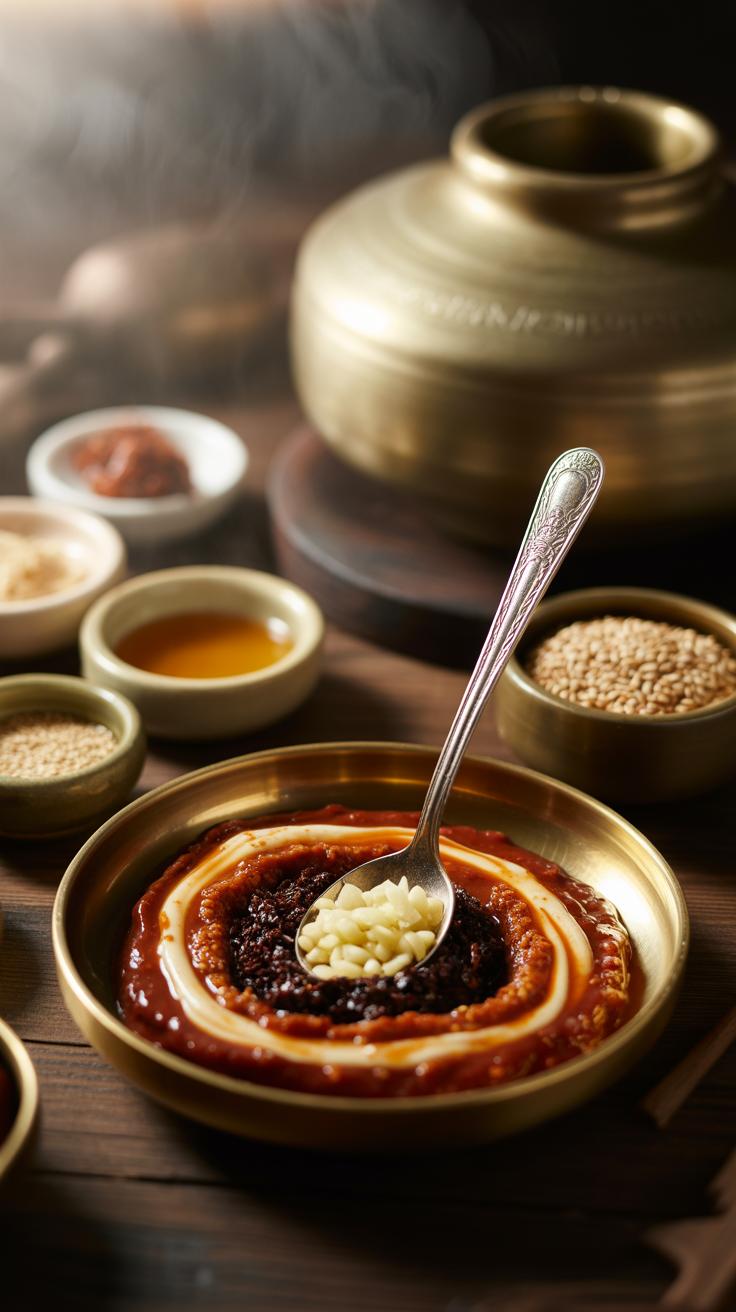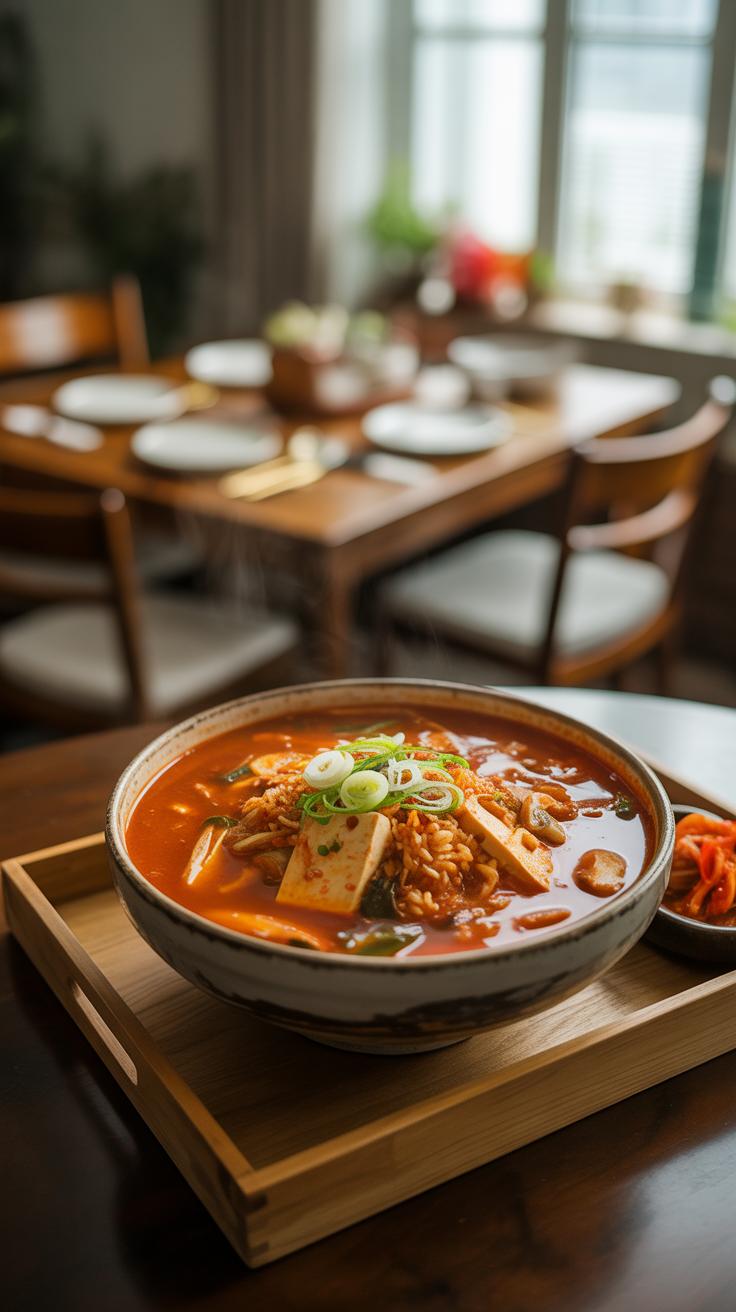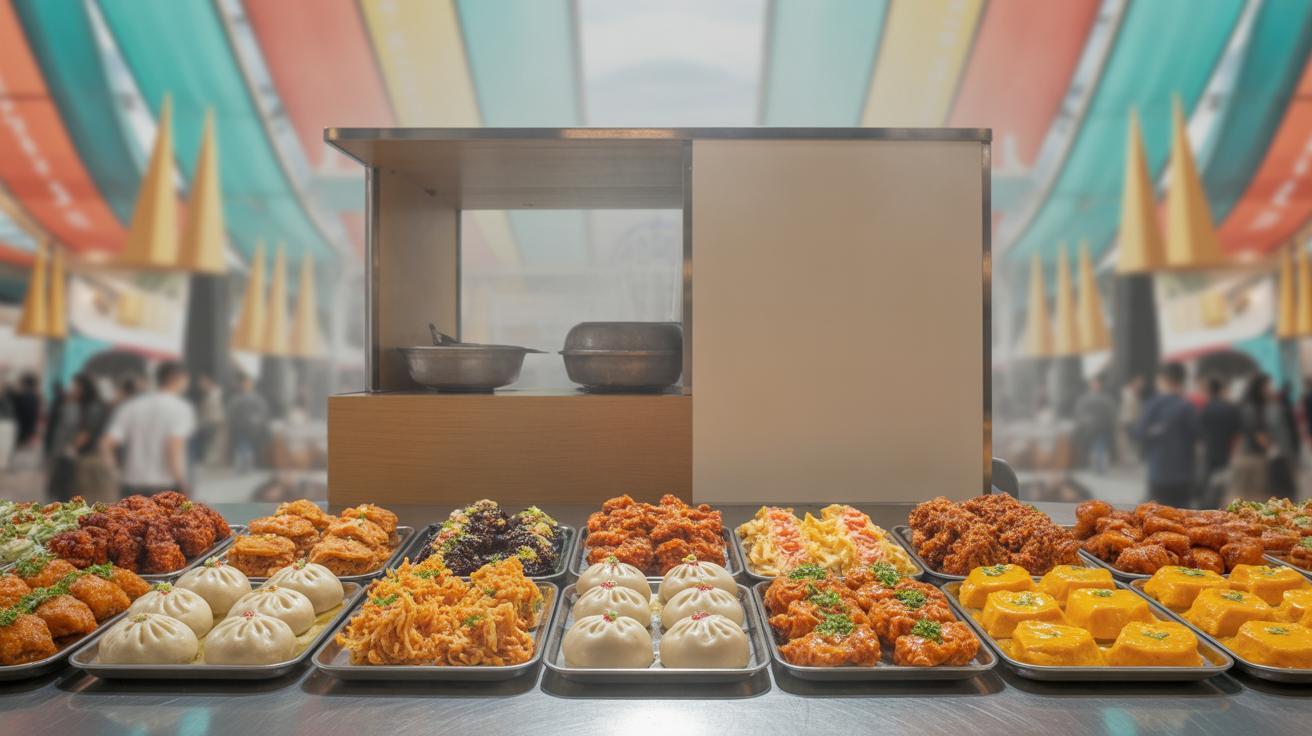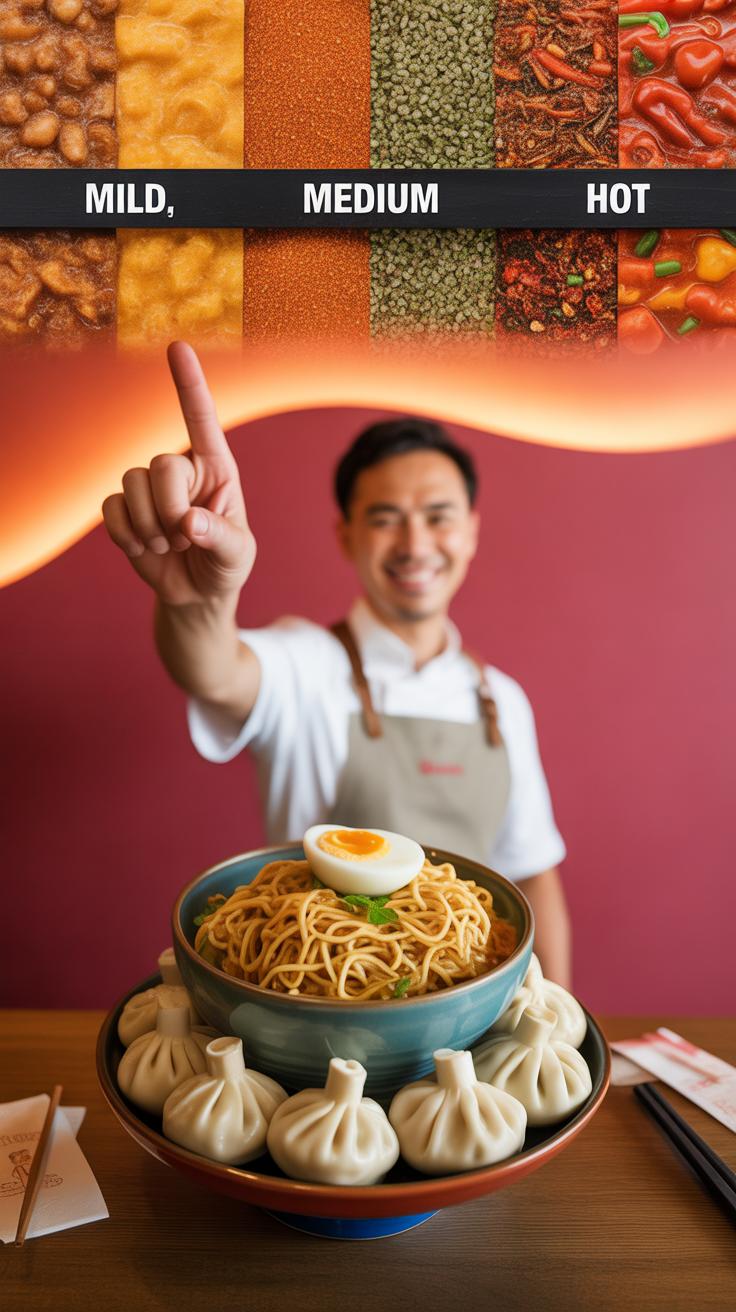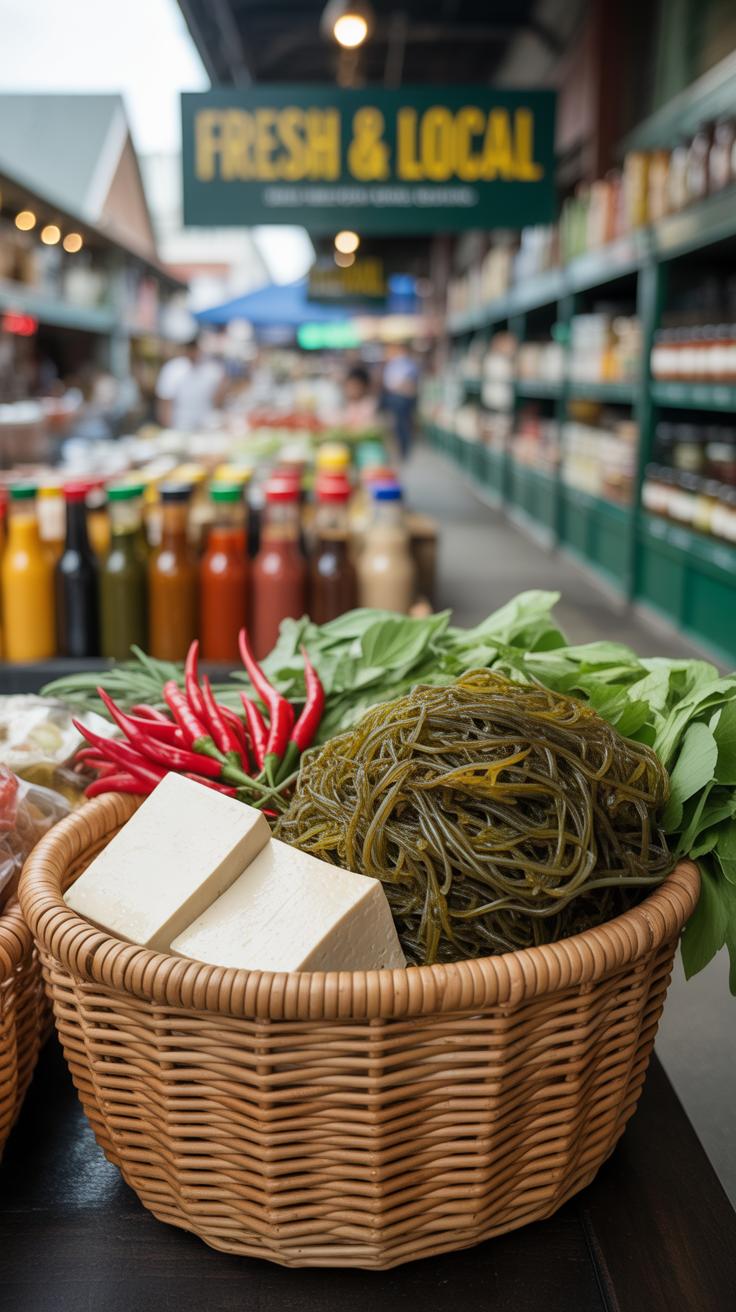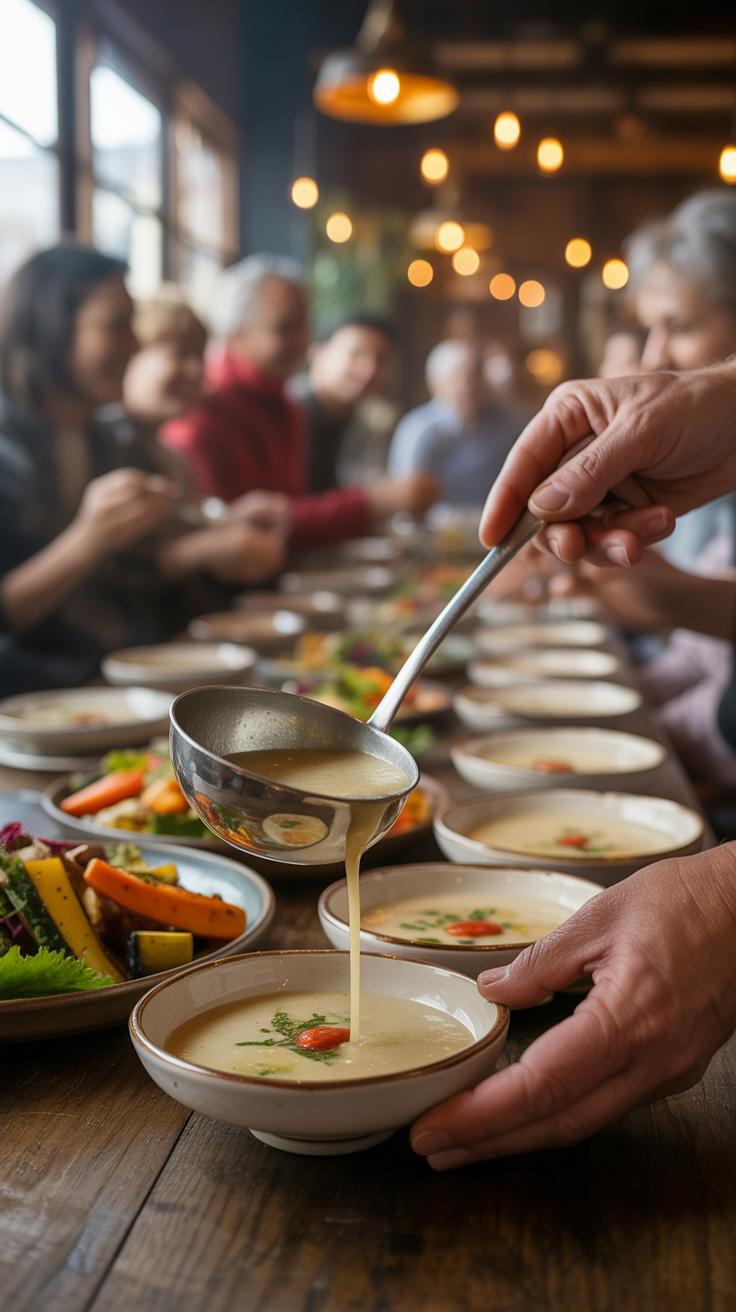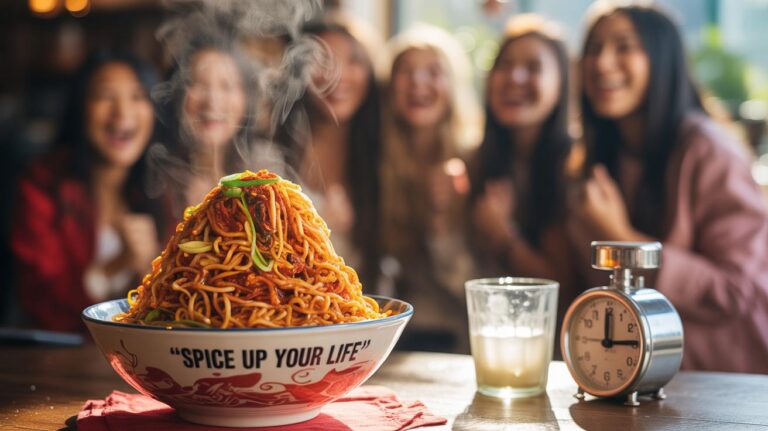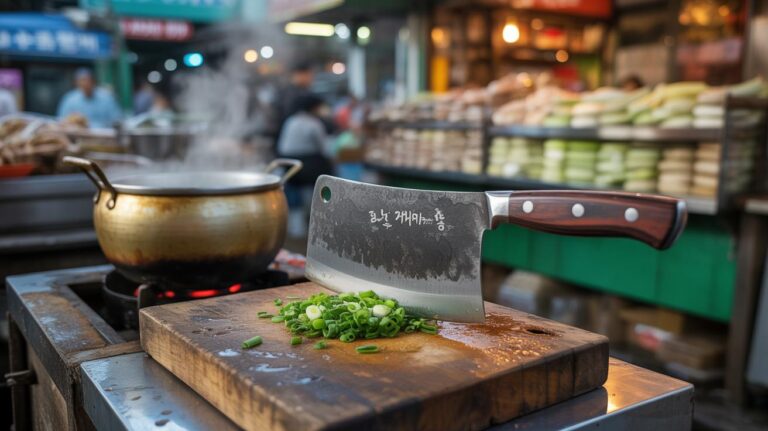Introduction
Warm soup is a comforting choice on rainy days. Korean soups offer a rich variety of flavors and ingredients, making them a delightful option to warm your body and soul. They usually combine fresh vegetables, meats, and spices to create dishes that are both healthy and satisfying.
In this article, you will learn about popular Korean soups. We will explore what makes these soups unique and easy steps to prepare them in your kitchen. Whether you are new to Korean cuisine or looking for new recipes, this guide will help you enjoy Korean soups on your rainy days.
Introduction to Traditional Korean Soups
Traditional Korean soups are more than just meals; they’re part of the culture, history, and daily life. These soups often combine simple ingredients with deep, slow-cooked flavors. People love them not only for taste but also for the comfort they bring—especially on cold or rainy days when a warm bowl feels necessary.
These soups usually start with a clear broth made from beef, chicken, or anchovies, simmered for hours to develop a rich base. Vegetables like radish, garlic, and green onions join in, along with tofu or noodles depending on the recipe. Each region and family might have its own twist, making the variety quite broad.
Their cultural importance runs deep. Soups are served during holidays, family gatherings, and even as everyday staples. They often represent care and nourishment, something to share around the table. Korean soups aren’t just food; they are tradition in a bowl.
What Makes Korean Soups Special
Korean soups stand out for their layering of flavors, which unfolds gradually with every spoonful. Unlike some soups that focus on bold one-note flavors, these are more subtle but complex. The preparation usually involves simmering bones and meats for hours, which takes patience but rewards with a broth that feels alive, not just salty water.
Also, Korean soups often balance savory elements with mild spice, sourness from fermentation, or even sweetness from vegetables. This balance makes them feel both hearty and refreshing. That mix might seem odd to someone used to more straightforward soups, but it works in a way that’s hard to replicate.
Another difference is how Korean soups are often part of a meal but can also be eaten solo, especially during tough weather. You don’t just eat these soups; you experience them slowly. The textures of soft tofu, crunchy vegetables, and tender meat all create contrasts that make each bite interesting, keeping you engaged through the meal.
Key Ingredients in Korean Soups
You’ll find some ingredients repeatedly in Korean soups, and they each play a distinct role. Here’s a quick look:
- Broth bases: Beef bones, chicken, anchovies, and sometimes dried kelp create rich foundations.
- Vegetables: Korean radish (mu), green onions, garlic, and mushrooms frequently appear.
- Proteins: Beef, pork, chicken, tofu, and seafood, depending on the recipe.
- Fermented elements: Doenjang (soybean paste) or gochujang (chili paste) add depth and complexity.
- Spices and seasonings: Garlic, ginger, black pepper, and sesame oil subtly enhance the layers of flavor.
Each ingredient isn’t used randomly. Their combination depends on factors like season, occasion, and personal taste. When you taste a good Korean soup, you’re tasting a careful balance that took time to develop, ingredient by ingredient.
Classic Korean Soups to Know
When you think of Korean soups, a few classics immediately come to mind. Each of these has its own personality, shaped by ingredients and history. They’re simple, yet somehow satisfying in a way that feels rooted deep in daily life.
Take Doenjang jjigae, for instance. It’s a fermented soybean paste stew that’s earthy and hearty. Main ingredients typically include tofu, vegetables like zucchini and potatoes, and sometimes clams or small shellfish. It’s the kind of soup you find on almost every Korean dining table, often served during regular meals without much fanfare.
Then there’s Kimchi jjigae. This one’s more robust, flavored with fermented kimchi, pork, and tofu. It’s spicy, sour, and a bit tangy. People tend to reach for this soup when they want something warming or if they have leftover older kimchi—it’s a practical way to avoid waste while enjoying deep flavors. It’s also popular during colder weather but really enjoyed any time a comforting, filling soup is desired.
Seolleongtang is quite different. It’s a milky beef bone soup, slow-cooked for hours until the broth turns rich and creamy. Mainly made with beef bones, brisket, and noodles or rice, it’s usually served topped with green onions and salt so you can season it to your taste. Seolleongtang is often eaten for special occasions or simply when someone wants a gentle, filling broth that’s easy on the stomach.
Soups in Korea aren’t just about flavor—they fit into mealtime rhythm and social customs too. Koreans often enjoy soups with almost every meal, not just as starters but integrated into the main course. On rainy or colder days especially, soups bring warmth and a sense of home. Plus, some soups are reserved for celebrations or to provide comfort when someone is ill or fatigued.
Isn’t it curious how just a few ingredients can create such a range of experiences? Whether it’s the salty tang of kimchi, the deep umami of doenjang, or the smooth richness of seolleongtang, Korean soups really reflect the culture’s relationship with food and community in subtle, meaningful ways.
Health Benefits of Korean Soups
You might not always stop to think about why Korean soups feel so comforting beyond the warmth. They’re not just about soothing your spirit on a rainy day—they bring real health benefits too. Korean soups often feature ingredients known for promoting wellness, and this goes beyond just taste.
Many Korean soups include fermented ingredients like doenjang (fermented soybean paste) or kimchi, which introduce probiotics to your digestive system. These probiotics can support gut health, which oddly enough impacts your overall immune function. It’s like a chain reaction: a healthier gut can mean fewer illnesses and quicker recovery times.
Vegetables play another vital role. Common soup vegetables such as radish, garlic, and green onions carry vitamins and antioxidants that reduce inflammation and help your body fight off infections. At the same time, lean proteins like tofu, fish, or sliced beef provide essential amino acids without the heaviness that can weigh down your digestion.
Warm liquids in soups improve digestion by helping break down food smoothly and, yes, making nutrients easier to absorb. The warmth encourages circulation, too, which can boost your immune response subtly but effectively. Eating a hot bowl of soup isn’t just comfort—it’s a gentle nudge toward better health.
So, when you reach for a Korean soup during a chilly, rainy afternoon, you’re likely getting more than just flavor. There’s a mix of ingredients that support your body’s balance and resilience, and that might be why these soups stick around in Korean kitchens for generations.
Choosing the Right Soup for a Rainy Day
When rain taps softly on your window, it’s tempting to reach for Korean soups with strong, comforting flavors that seem to chase away both cold and dampness. Think of soups like galbitang—a hearty beef short rib soup simmered for hours until the broth turns rich and soulful. Or samgyetang, the ginseng chicken soup; it’s not only warming but feels like a cozy hug from the inside. These soups have deep layers of flavor that linger, making you forget the chill outside, at least for a while.
Yet, sometimes you might want something lighter. Not every rainy day demands heavy broths. Soups like miyeokguk (seaweed soup) offer gentle nourishment. It’s subtle but still soothing and warm, calming your body without weighing you down. You may find this kind of soup better if your appetite is small or if you want to avoid feeling sluggish.
What do you usually prefer when it rains? Something rich that fills and comforts, or a simpler bowl that soothes quietly? Both have their moments, and your choice might change depending on your mood or how wet and cold it really feels outside.
Making Korean Soups at Home
Cooking Korean soups doesn’t have to feel overwhelming. You only need a few simple tools and ingredients to get started. Think of a medium-sized pot—nothing fancy, just sturdy enough to simmer broths for a while. A ladle helps when serving, and a sharp knife is crucial for prepping vegetables and meats precisely.
As for ingredients, some basics tend to show up in almost every recipe: dried kelp (dashima) and anchovies for stock, Korean radish, tofu, garlic, soy sauce, and green onions. You might wonder if you need special markets for these, but many Asian grocery stores carry them. Even if not, some can be substituted—still, it’s better to seek the real ones for authentic taste.
Simple recipes like doenjang-guk (soybean paste soup) or miyeok-guk (seaweed soup) begin by making a clear stock with kelp and anchovies. After simmering for about 20-30 minutes, strain it out, then add your main ingredients. Season carefully and let the flavors meld. It’s a slow, steady process, but in the end, it feels like you’ve actually made something meaningful, something that truly warms you up.
Have you tried starting with just making the broth? It can seem plain at first, but trust me, it’s key. Once you get comfortable with that, adding vegetables, tofu, or even small amounts of meat feels less tricky. And that’s where the real fun begins—watching a simple soup turn into the cozy bowl you didn’t know you needed on a rainy day.
Flavoring Secrets in Korean Soups
Korean soups owe much of their signature taste to a few key flavoring techniques that might seem simple but make all the difference. At the heart of many recipes are fermented sauces. Do you know how doenjang, the fermented soybean paste, can transform broth? It adds a deep, earthy umami that goes beyond saltiness, almost like a seasoning that seeps into every layer of the soup. Gochujang, the fermented chili paste, brings a spicy kick balanced with a mild sweetness, which surprises many who expect just heat.
But it’s not just about the sauces. Fresh ingredients play their part too. Take garlic, for example. It’s often added early while sautéing ingredients, releasing a mellow pungency that settles into the broth rather than overpowering it. Green onions get tossed in at different stages—sometimes raw at the end for a sharp bite, sometimes simmered for a softer, sweeter aroma.
Then there’s sesame oil, which might seem minor but slightly drizzled at the end changes everything, lending a toasted, nutty finish that lingers. These flavoring methods are a bit like layering, but without overwhelming the palate. They balance each other in unexpected ways, creating that warm, comforting taste that you crave on damp, chilly days. Have you tried simmering a pot of soup with these ingredients and noticed how the aroma shifts with time? It’s subtle but powerful.
Pairing Korean Soups with Side Dishes
Korean soups rarely stand alone at the table. They usually come surrounded by a variety of side dishes, or banchan, creating an experience that’s more than just a simple meal. These side dishes add layers of texture and flavor, making each spoonful of soup feel richer and more satisfying, especially on those gloomy rainy afternoons.
Kimchi and Other Fermented Sides
Kimchi is the superstar here—its tangy, spicy notes cut through the often mild or savory broth of soups like doenjang jjigae or galbitang. What’s interesting is how the fermentation brings a brightness that refreshes the palate with each bite. You might also find other fermented sides like jangajji, pickled vegetables, or even fermented soybean products that work well at balancing richness and adding complexity. I think the underlying acidity and saltiness from these sides enhance the overall depth of the meal and make you want to keep coming back for more, though it’s easy to overlook this subtle relationship if you’re not used to eating them together.
Rice and Noodle Accompaniments
Rice is almost a must-have partner for soups. Plain steamed rice soaks up the broth, tempering intense flavors and providing substance. When you add a spoonful of rice into a bowl of spicy kimchi jjigae, for example, it mellows out the heat and creates a satisfying, hearty mouthful. Sometimes, soft noodles like glass noodles or wheat-based ones appear alongside or even inside certain soups, like sujebi or kalguksu. These noodles bring a chewy texture that contrasts with the softness of vegetables or meat in the broth. Often, I’ve found that choosing between rice and noodles depends on the soup’s character and the mood you’re in—sometimes you want the comforting chew of noodles, sometimes the steady soak of rice. Either way, they ground the soup in a way that feels complete.
Adapting Korean Soups for Your Taste
Making Korean soups work for your own diet or pantry isn’t always straightforward, but it’s definitely doable. If you prefer plant-based meals, switching out the usual beef broth or seafood with vegetable stock can work well. Try using mushrooms for a rich, umami flavor or seaweed like kelp to keep that authentic taste without animal products. Tofu, firm and cubed, often replaces meat in dishes like sundubu jjigae quite nicely, though the texture feels different—and that’s okay. It might take a few tries to get it just right.
Controlling spice is trickier since many Korean soups rely on gochujang or chili flakes. Still, you can dial the heat back or up by adjusting the amount of chili powder or skipping it altogether. Some people prefer a just-warm hint of spice, while others want to sweat a little over their bowl. It’s about knowing your own limits—and maybe experimenting a bit. You might even like a milder soup with a burst of fresh green onions or garlic to keep flavors lively without the burn.
Availability also shapes how you adapt soups. Don’t have Korean radish? Try daikon or even turnip. Missing perilla leaves? Spinach or kale can substitute though they’ll change the taste. Flexibility is key when you cook something as living and personal as soup.
Where to Find Korean Soup Ingredients
Getting authentic Korean soup ingredients can feel tricky at first, but it’s often easier than you think. If you have an Asian market nearby, that’s usually your best bet. These stores tend to carry items like gochujang (red chili paste), doenjang (fermented soybean paste), dried kelp, and various kinds of rice cakes or noodles—things that give Korean soups their distinct flavor.
Places specializing in Korean products within larger cities might stock fresh items like perilla leaves or Korean radish. Sometimes, you’ll find helpful staff who know their way around these ingredients and might offer tips or alternatives. It’s worth popping in to ask them what’s in season or what they recommend.
Shopping online can also work well, especially if you don’t live close to an Asian market. Websites like H Mart and KoreanMart24 offer a wide range of products. But, I suppose you want to be cautious: check reviews and delivery times before ordering. Some ingredients are perishable or fragile, and you don’t want spoiled goods messing up your soup plans.
When buying dried goods or sauces online, see if there’s an option to buy smaller quantities if you’re experimenting. That way, you avoid the disappointment of unused jars lingering in your pantry. Also, some sites include helpful recipes or seasoning guides, which can make navigating those new flavors less intimidating.
Overall, sourcing isn’t just about finding the ingredients; it’s about discovering the stories behind them, which can feel a bit like an adventure on its own. Maybe that’s part of what makes cooking Korean soup on a rainy day so special.
Enjoying Korean Soups with Family and Friends
Sharing a bowl of Korean soup is about more than just eating. It’s a moment of connection, a small ceremony where everyone gathers around the table, exchanging stories and warmth. Korean soups often come in generous pots meant for sharing rather than personal servings. That communal aspect makes the experience richer—there’s something comforting about passing ladles, offering seconds, or helping someone else with their bowl.
Think about hosting a meal yourself. When serving dishes like doenjang jjigae or galbitang, presenting them in traditional stone or earthenware bowls keeps the soup warm longer and adds a sense of authenticity. You might line up small side dishes—kimchi, pickled radishes, and steamed rice—encouraging guests to mix flavors as they like. It’s less about rigid etiquette and more about enjoying variety together.
To make the gathering truly special, the atmosphere matters as much as the food. Dimmed lighting, soft background music, or simply the sound of rain outside can create a cozy setting. Sometimes, light conversation combined with the simple act of sipping hot soup invites a quiet comfort. Have you noticed how a shared bowl can slow time down? Maybe that’s the magic—you’re not just eating; you’re experiencing a subtle warmth beyond the broth itself.
Conclusions
Korean soups feature simple but impactful flavors. They often use fresh ingredients that nourish your body while providing warmth and comfort. Each soup has its distinct taste and ingredients, making Korean cuisine diverse and interesting.
By trying out these simple recipes at home, you can enjoy the rich tastes of Korea anytime it rains. Korean soups not only warm you but also bring a little culture and health benefits to your table. Try making Korean soups to add variety and comfort to your meals.

